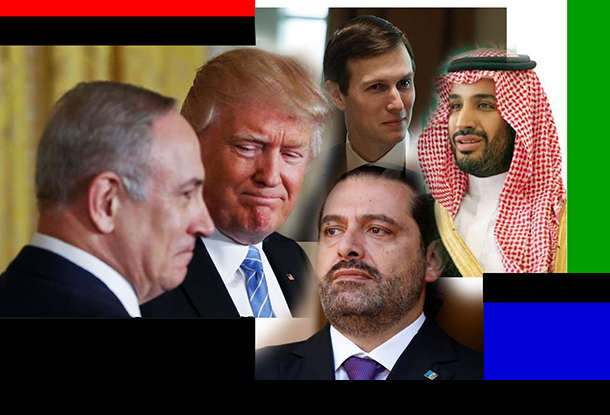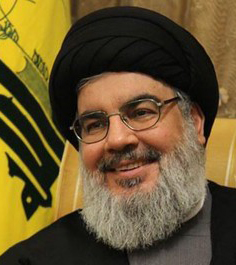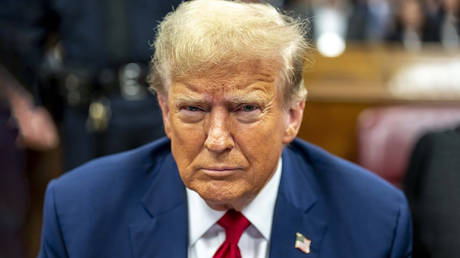Art of the Deal: Behind Saudi-Lebanon Crisis is Trump’s Middle East ‘Peace Project’
 Patrick Henningsen
Patrick Henningsen
21st Century Wire
The recent ‘forced’ resignation by Lebanese PM Saad Hariri in Riyadh under the influence of Crown Prince Mohammed bin Salman, and subsequent threats by Saudi Minister Thamer al-Sadhan against Lebanon and Hezbollah – have puzzled analysts as to the motivation behind this seemingly irrational series of events.
While it’s true Saudi Princes and their Wahhabi order have been slighted by Hezbollah in Syria and by the Hashed al-Shaabi in Iraqi – both Shia-based popular mobilization movements who helped to eradicate ISIS from the region, watching all of their Gulf billions invested in the destablization of Syria and Iraq go down a blood soaked drain – the fact remains that neither Lebanon nor its Hezbollah movement poses any direct threat to the country of Saudi Arabia.
Is this Saudi tirade just a case of an unstable young, soon-to-be king in Mohammed bin Salman, 32 years-old, consolidating too much power too soon, or is there more to it? Some analysts have been speculating that maybe Israel is the invisible hand pushing the oil Kingdom to do its bidding in the region as they both share a common enemy in Iran. So who is directing these events?

Hezbollah leader Hassan Nasrallah (image,left) also made the claim this week that Saudi Arabia has offered Israel ‘billions of dollars’ to attack Lebanon on its behalf, as well as accusing the Saudis of strong-arming Lebanese PM to resign on camera. Nasrallah knows that both Tel Aviv and Riyadh (with full US backing) have Hezbollah in mind when any threats are made toward Lebanon, but as Middle East analyst Eisa Ali explained on yesterday’s Sunday Wire radio program, this perceived joint-threat by Israel and Saudi has driven Lebanon closer to political unity on this issue.
Last night the Israeli press begun to try and distance itself from a Saudi-led conspiracy, with Haaretz being the first to dismiss the ranting threats coming out of Riyadh, while simultaneously pushing the Trump Administration to the frontline.
Writer Amos Harel’s op-ed entitled, “Saudi Arabia Is Opening a New Front Against Iran, and Wants Israel to Do Its Dirty Work,” helps to reveal part of a still concealed agenda:
“As the days passed, the resignation seemed more like a Saudi dictate, stemming from Saudi Arabia’s displeasure at the way Hariri was compelled to cooperate with Hezbollah in Lebanon’s government.”
It’s unclear if the Saudis will necessarily make do with these moves. The royal house is particularly close to the Trump administration and Saudi Arabia was one of the few countries, along with Israel, which enthusiastically welcomed Trump’s election, this time last year. Over the past year there have been a growing number of reports around the world of increasing diplomatic coordination between Riyadh and Jerusalem, accompanied by cooperation in intelligence matters. Israel and the Saudis see Iran as a common enemy, and both are frustrated at the West’s incompetence in dealing with Iran’s growing influence in what is known as the “Shi’ite Crescent” in the region.”
If Lebanon and Hezbollah do not pose a direct threat to Saudi Arabia, then what’s really going on? Is this really an American-led agenda we are watching now?
While the liberal Israeli press may be taking a stand-offish position in relation to recent events, you can be certain that Israel is very much involved in this process, albeit working diligently behind the scenes through an Israeli-friendly White House in Washington, and Netanyahu and Trump’s shared personal assistant, wunderkind Jared Kushner. Indeed, it’s through Kushner that we can track the real agenda which is in motion right now, as these latest events between Saudi Arabia and Lebanon are directly linked to Donald Trump’s big-ticket item – the Israel-Palestine “Two State Solution” peace deal – which he had promised on the campaign trail. It’s happening as we speak.
Make no mistake about it: this ‘peace deal’ will become Trump’s major pièce de résistance for his first term, and his ticket to redemption heading into the 2020 election cycle. The question is, who in America will resist it?
Here Haaretz lets the cat out of the bag as to how this will be used to leverage Israeli interests:
“The string of events, starting with the Qatari crisis last summer, strengthens the assumption that this is part of a wider Saudi move, an ambitious attempt to reach a new regional order. On the diplomatic front this is linked to the internal Palestinian reconciliation, led by Cairo but which also requires financial backing by the Saudis and the Emirates. This won’t be all, apparently. The defense establishment and political circles in Israel are preparing for the likely possibility that the Trump administration will soon present Israel and the Palestinian Authority with a new document, in an attempt to jumpstart the stalled peace process. Such a move may be pursued in a coordinated way between the United States and the Saudis. Saudi ambitions may have other results as well.”
There it is. The Art of the Deal, and it’s not going to be Camp David style this time. It will be a transactional deal – most certainly with large strings attached for Lebanon and which will be designed to first isolate Hezbollah and then evict Iranian influence from the region. Be sure of one thing though – if this ‘deal’ is being drafted by the US and Israel then you can be certain that it will not be well-thought out, and it will surely discount the interests of Syria, and the Shia majorities in Lebanon and Iraq.
And what about the Palestinians? It’s also a safe bet that any ‘deal’ drafted by the US and Israel will not be a very good deal for the Palestinians – who will be the last party considered in all of this high-flying talk of ‘peace and stability’ in the region.Will they get the right of return? Will their current situation really improve from such a deal? Looking at Israel and the US track record of running the ‘peace process’ in this part of the world, I’s say it’s highly doubtful.
So there you have it – now we know it’s the US, in conjunction with Israel, who are maneuvering behind the scenes, and who will observe a mutual Saudi-Israeli-American desire to keep Iran weak and mitigate its influence throughout the region. Easier said than done. These factors are what’s really driving events that we see rapidly unfolding in the Middle East.
And, no all is still not well in Arab wonderland:
“An article in Haaretz this week by former U.S. ambassador to Israel Dan Shapiro asked whether the Saudis were pushing Israel into a war with Hezbollah and Iran.”
So which will come first – the war, or the peace?
It’s difficult to tell. Certainly, avoiding the war should be everyone’s first priority.
In the meantime, Lebanon is still in the dark as to when they will get their Prime Minister back.
Should Lebanon (once again) consider itself a target in the crosshairs of the great powers in their latest plans to reshape the region?
READ MORE ISRAEL NEWS AT: 21st Century Wire Israel Files
SUPPORT 21WIRE – SUBSCRIBE & BECOME A MEMBER @ 21WIRE.TV



